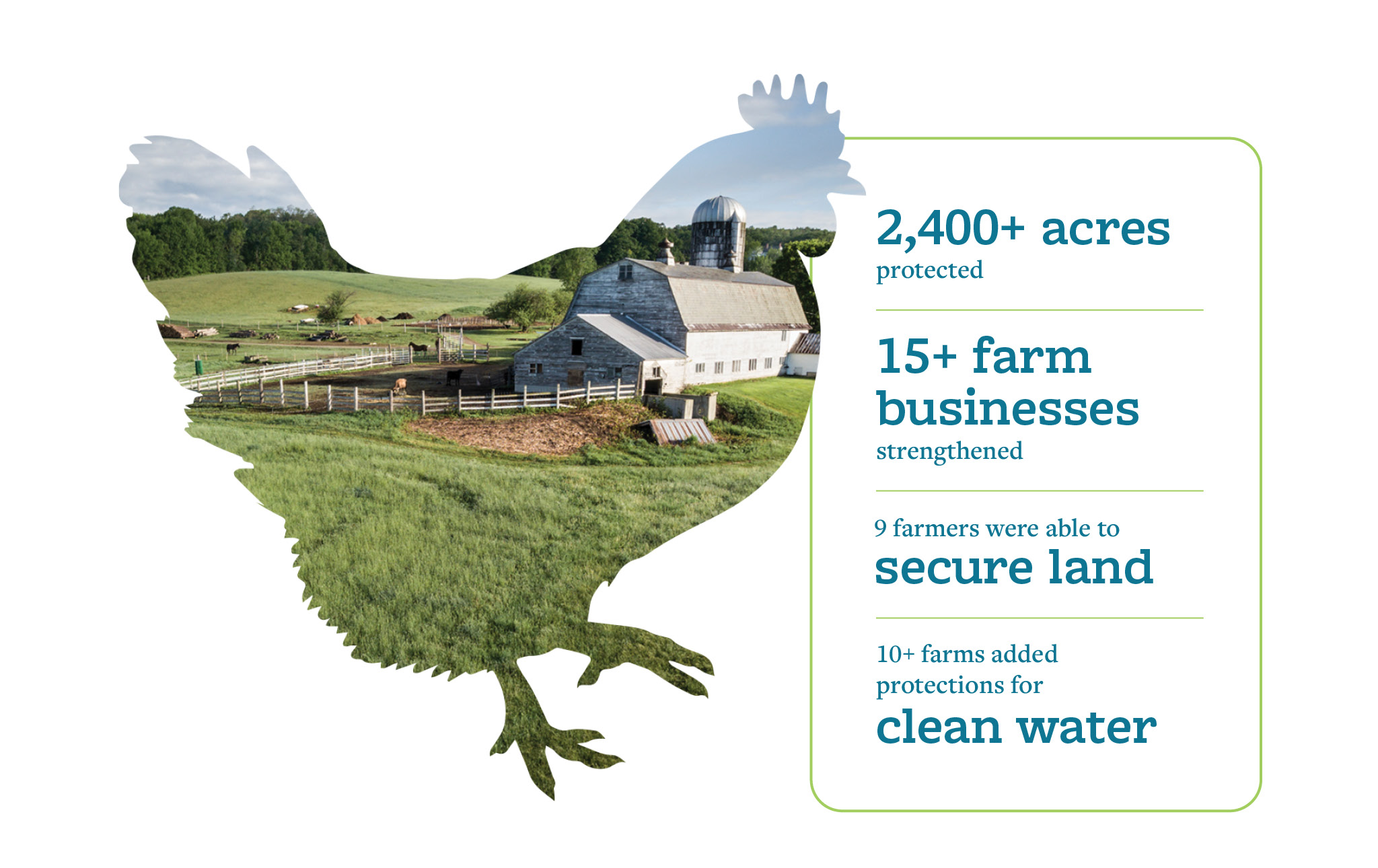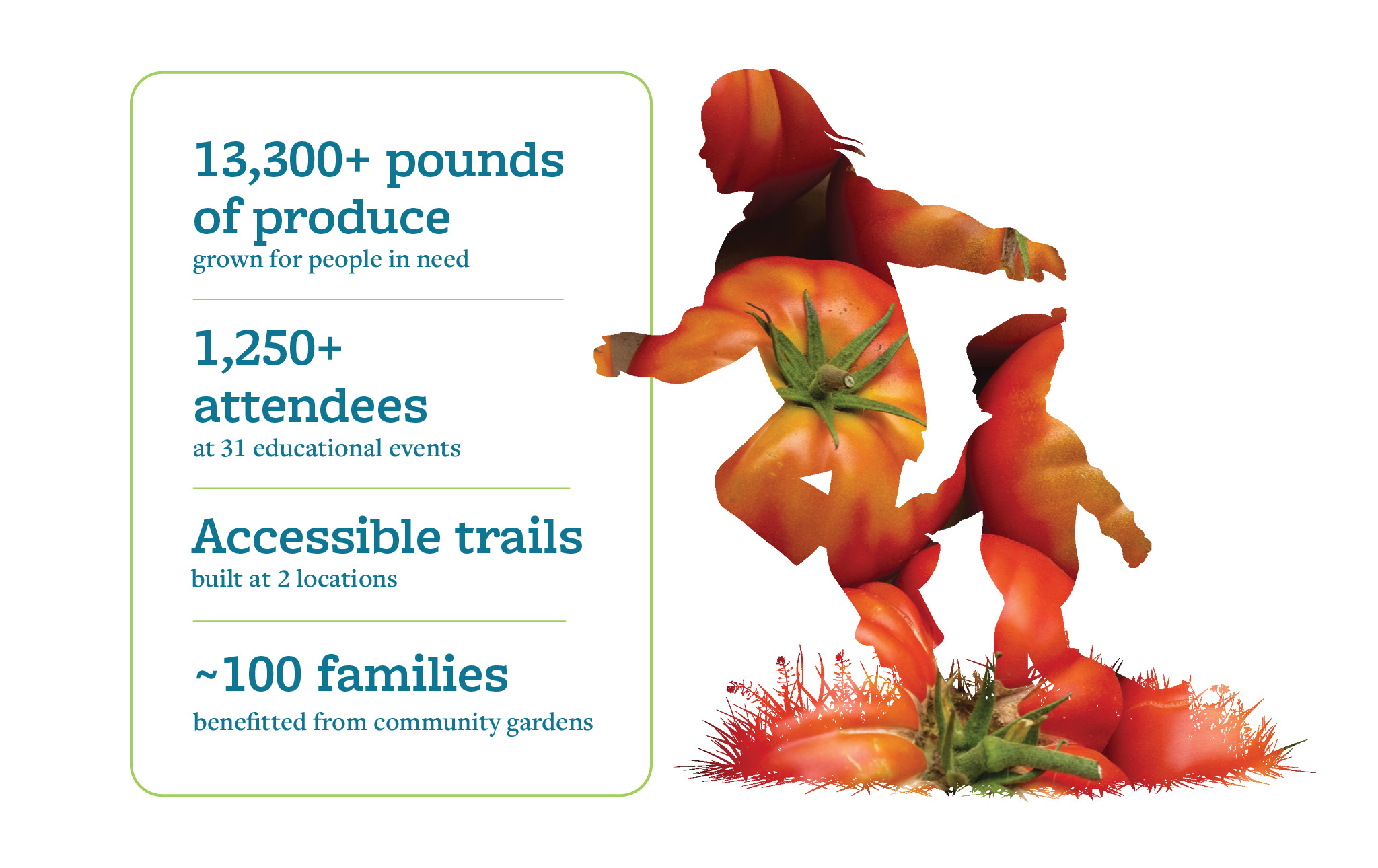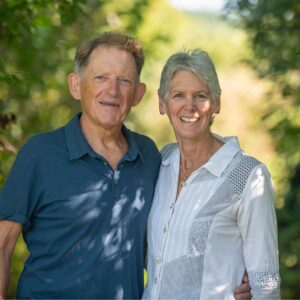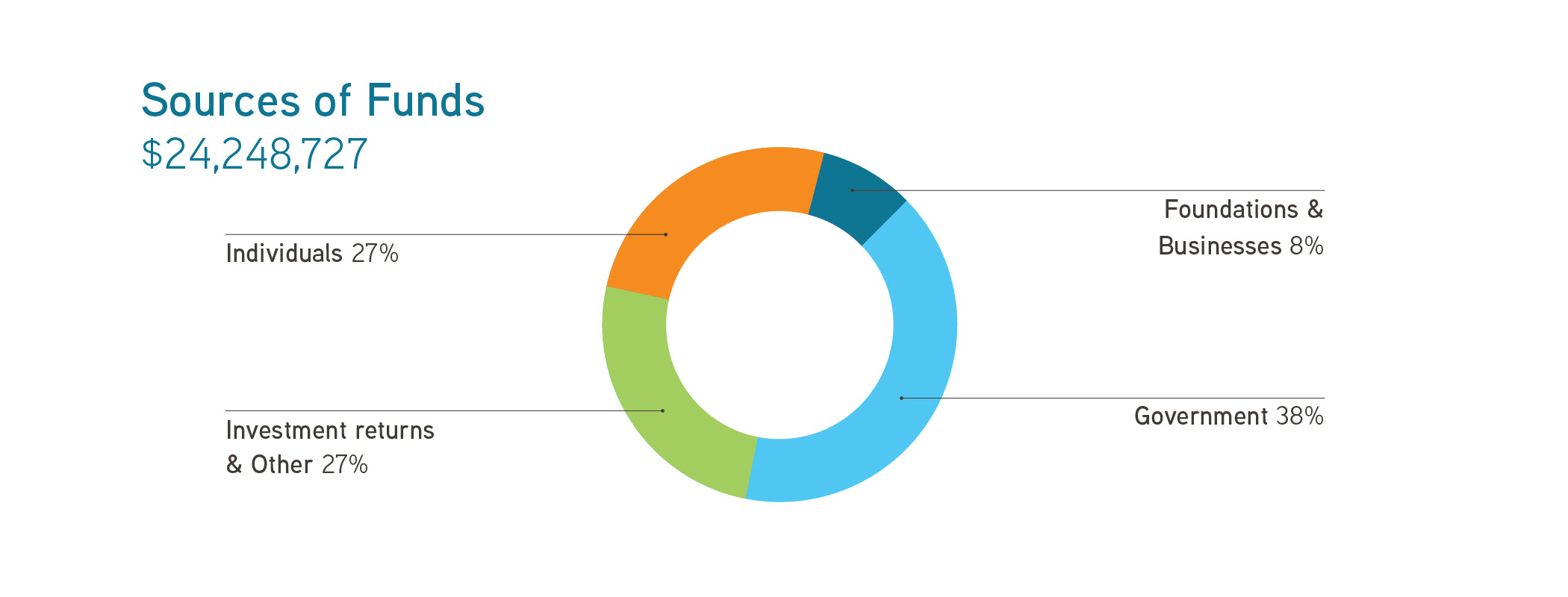Enosburgh, Fairfield – Sarah Downes and Stephen Wadsworth donated conservation protections on 257 acres of forestland, in an area deemed high priority for resilience and connected ecosystems across the vast Northern Forest that spans Vermont, New Hampshire, New York, and Maine. The newly protected parcel is especially important for wildlife with a range of supportive habitats, including forested and beaver-influenced ponds and wetlands and beech stands with evidence of use by black bears. It also has two miles of frontage on headwater streams that ultimately flow into the Missisquoi River and Lake Champlain.
Sarah and Stephen have been fixtures in Vermont’s working landscape and the education of its current and future stewards for decades. Now retired, Sarah taught agriculture and natural resources at the Cold Hollow Career Center for most of her career. Stephen has been a dairy veterinary practitioner for more than four decades in northern Vermont and a lecturer and advisor to UVM’s student-run dairy herd.
Fairfax – The Franklin County Natural Resources Conservation District led an effort with community members to plant more than 2,000 native trees and shrubs on nearly five acres along a stream in Garland Park, the town forest. Among the species planted were Silver Maple, Nannyberry, White Pine, and Red Osier Dogwood. The added vegetation will boost clean water in the Lamoille River, into which the stream, known as Stones Brook, flows. Long-time resident Newt Garland protected the 63-acre parcel with us in 2019 and then donated it to the Town of Fairfax in 2023.
Highgate – Dan and Lise Brosseau protected 293 acres of farmland, woods, sugarbush, and wetlands for their family farm. Dan bought the property in the 1980s and the experienced farmers have adapted over the decades: after running a dairy for decades, today Brosseau sweet corn is found in Hannaford stores in the area, as well as other local groceries and farmstands across Franklin County and Vermont. They also grow about 10,000 pumpkins for those retail outlets and sell sap from their 8,000-tap sugarbush to a local maple sugarmaker.
The protected property has over 170 acres of agricultural soils and nearly 160 acres of managed forest that includes 87 acres of sugarbush. The parcel also hosts an eight-acre wetland area that provides habitat for local wildlife and enhances clean water in the Missisquoi River basin. Dan and Lise have joined many farm neighbors to the north and south, who have together conserved hundreds of acres in Highgate and Swanton.
Highgate – The Franklin County Natural Resources Conservation District led an effort to plant 960 native trees and shrubs on more than two acres of retired farmland on a conserved farm. The planting took place along the Rock River, which ultimately flows into Lake Champlain, and included Silver Maple, Red Maple, American Elm, Silky Dogwood, White Pine, Arrowwood, and many other native species. The effort will improve clean water and flood resilience in the Lake Champlain watershed.
Isle La Motte – James McClare and Colleen Honan conserved 51 acres of open and wooded land with headwater streams, wetlands, and shrublands. The wooded areas feature early successional forest with evergreens and hardwoods. The streams on the property flow directly into Lake Champlain and the trees and shrubs along their banks provide wildlife habitat and promote clean water.
Jericho – We partnered with the Winooski Natural Resources Conservation District to plant 965 native trees and shrubs as well as 200 willow stakes on three acres of retired farmland along the Lee River at the conserved Farm Upstream. Students from Mount Mansfield Union High School and the Pond Brook School and farmers from The Farm Upstream joined the effort. The team planted four kinds of willow, two kinds of dogwood, American Elm, Gray Birch, among many other species. Some of the trees were grown on the farm and the rest were sourced from Verterra Nursery in Hinesburg. The trees and shrubs will help hold the soil in place and absorb rainwater, reduce erosion, improve habitat for many species, and boost clean water in Lake Champlain.
Monkton – The Town of Monkton bought and conserved 450 acres from the A. Johnson Company to establish a town forest. The property has significant opportunities for outdoor recreation, including areas with gentle terrain near access points, ponds, extensive forestland and existing woods roads that were used informally in the past by the community. In addition, there are vernal pools, extensive beaver-influenced wetlands, habitats for rare and endangered species, and multiple ponds and miles of streams, including headwater tributaries of Pond Brook and Little Otter Creek. Through a multi-year campaign, the Town and VLT raised over $1.1 million to buy and conserve the property and establish a management fund to help care for the land and improve public access.
Montgomery – Don and Sandy Crocker worked with us and Cold Hollow to Canada to donate conservation protections on 152 acres in the northern Green Mountains for forest health, wildlife habitat, and clean water. The mostly forested property includes over a mile of frontage on the Trout River and one of its tributaries, Hannah Clark Brook. Since buying the land a few years ago, the Crockers have worked to make it more hospitable for a range of wildlife, creating small openings in the woods for the species that need them, and establishing pollinator-friendly patches in the fields. The northern Greens provide critical space for wildlife to live and roam, helping animals migrate safely, maintain genetic diversity, and adapt to climate change.
New Haven, Waltham – Donna Corcoran conserved 152 acres of farmland, woods, wetlands and streams. The land has been in the family for six generations. Donna and her late husband, Thomas, ran a dairy for many years. The property consists largely of high-quality farmland, which has been rented and managed for nearly 20 years by Bristol’s Four Hills Farm for their dairy herd. Those fields will remain open and available for farming into the future. The project includes special protections for the parcel’s wetlands and ecologically sensitive areas.
Orwell – Michael and Alyson Eastman protected more than 200 acres of farm fields, wetland, and streamside land. With nearly 190 acres of fertile agricultural soils, the property has long been used for farming. Alyson’s family, the Audets, have owned it for nearly a hundred years and ran a dairy there for many decades, though in recent years it has been leased to nearby farmers. The current lessee is Jon Lucas of Lucas Dairy Farm, located just a short distance away. We helped Jon, a first-generation dairy farmer, buy his land with conservation support. In addition to the farmland, the newly protected property features Lakeside Floodplain Forest, documented habitat for Lake Cress, a rare plant in Vermont, as well as special protections on nearly 13 acres of wetlands and about 4,000 feet of land along East Creek, which drains into Lake Champlain.
Orwell, Whiting – Dairy farmers Kylie and Jeremy Chittenden added protections to their 297-acre conserved farm to ensure it will remain available to future farmers. The project also established a Wetland Protection Zone on nearly 19 acres of wetland and riparian habitat along tributaries of Sawmill Brook and the Lemon Fair River. In addition to the conservation transaction, we planted 200 native trees and shrubs along one of the tributaries, for clean water and flood resilience.
The farm is primarily used for crops and labor housing and is part of a nearly 6,500-acre continuous block of conserved farmland in the productive Champlain Valley. The land was originally protected 25 years ago, and long used by Kylie’s parents, Lorenzo and Amy Quesnel for the family dairy business. Kylie and Jeremy are gradually taking over the business and the land from the Quesnels, and this conservation project is one step among many in the complicated process of passing on a farm to the next generation. Jeremy and Kylie plan to invest the conservation funding on much needed deferred maintenance of farm infrastructure. They also plan to improve their land management, continue their unique work in in-vitro dairy genetics, and keep the business going for at least another generation.
Sheldon – Stephen and Richard Dodd protected 332 acres of farmland, sugarbush, streams, and wetlands. The brothers took over the family dairy farm in 1989 and have run it together ever since. They bought this parcel to add to the land base they use for the business, milking about 220 cows. Steve’s daughter, Morgan, and her husband Seth, live and work on the farm, managing day-to-day work with the cows. Steve’s son, Ethan, taps the 61-acre sugarbush on the property and produces maple syrup. Steve and Richard are preparing to transfer the business to the next generation in the coming years.
The brothers first conserved more than 160 acres along a tributary of the Missisquoi River, in 2022. This parcel is located further upstream on the same tributary. Its protection helps create a corridor for wildlife along the water.
Shoreham – Kathleen and Randall Brisson conserved 152 acres of farmland, woods, and wetlands. Randall’s grandfather started the farm about 90 years ago. The family ran a dairy for over 60 years and then switched to leasing the productive cropland to neighboring farmers. It is currently used by Joe and Kathleen Hescock of Elysian Fields for their organic dairy based nearby. The Hescocks practice rotational cropping of organic hay, corn, and grains for their herd. The Brisson farm joins many other conserved farms in the area that will remain open for future farmers.
South Burlington – After working closely with conserved Bread & Butter Farm and a coalition of community partners including the City of South Burlington for several years, we helped The Agrihood Collective purchase 360 conserved acres to establish a community hub for food and farming in the greater Burlington area. Led by farmers, food business owners, and agroecologists, the group’s mission is to provide communities with quality nutrition, land-based education, and healthy ecosystems by ensuring the permanent regenerative stewardship of land and viable farm livelihoods.
In an area facing intense development pressure, the effort has protected 227 acres of farmland, 46 acres of wetlands, and 13 miles of streams that will be permanently stewarded using farming practices that restore soil and ecosystems, and will serve as a home for land-based education. The Agrihood Collective joins a small set of community-based groups forging new models for shared ownership of farmland and natural resources.
South Burlington – The City of South Burlington donated conservation protections on 105 acres of the centrally located Wheeler Nature Park to safeguard the space as a vital community resource for residents of the city and neighboring towns into the future. The effort will keep the land open for outdoor recreation, education, and other community uses, and protect the property’s biodiversity, wildlife habitat, water resources, forestland and fields. The park boasts an extensive trail system that winds through wooded areas as well as open land, with signage, boardwalks, stream crossings, and bridges. In addition to recreational use, the property is also used for outdoor education by students and teachers.
The conservation effort began after a 2016 task force of city committees and the South Burlington Land Trust came together to chart a course for the park’s permanent protection. The park will continue to be owned and managed by the City.
Swanton – Arthur Boulerice conserved more than 350 acres of farmland, woods, and a sizeable wetland including red maple-northern white cedar swamp. The Boulerice family stopped milking cows many years ago but the land still provides feed for cows at a neighboring dairy, the Longway Farm which also owns conserved land in the area. The farm is a “puzzle piece” within a swath of conserved farmland near St. Albans Bay. The contiguous block now totals nearly 9,000 acres and includes some of the best farmland in New England.

 We protected a range of forests and habitats for wildlife, biodiversity, carbon storage, clean water, and livelihoods. We also conserved lands for communities to enjoy and care for — in Berlin, Dummerston, Monkton, South Burlington, and Westminster.
We protected a range of forests and habitats for wildlife, biodiversity, carbon storage, clean water, and livelihoods. We also conserved lands for communities to enjoy and care for — in Berlin, Dummerston, Monkton, South Burlington, and Westminster. We helped farms flourish: securing land for beginning farmers, supporting retiring farmers so the next generation can farm their land, and adding protections for rivers, streams, and wetlands on farm properties.
We helped farms flourish: securing land for beginning farmers, supporting retiring farmers so the next generation can farm their land, and adding protections for rivers, streams, and wetlands on farm properties. We deepened connection to the land and its care by offering educational events, supporting community access to land, and making the lands we own more welcoming to all — hosting community gardens, improving recreation trails, and supporting access to local food for people from all backgrounds.
We deepened connection to the land and its care by offering educational events, supporting community access to land, and making the lands we own more welcoming to all — hosting community gardens, improving recreation trails, and supporting access to local food for people from all backgrounds. We redoubled our efforts to protect and restore Vermont’s watersheds for clean water, flood safety, wildlife habitat, and biodiversity. We planted native trees and shrubs, added woody material to streams and gullies, and removed man-made barriers to restore floodplains and reduce flood risk.
We redoubled our efforts to protect and restore Vermont’s watersheds for clean water, flood safety, wildlife habitat, and biodiversity. We planted native trees and shrubs, added woody material to streams and gullies, and removed man-made barriers to restore floodplains and reduce flood risk.



